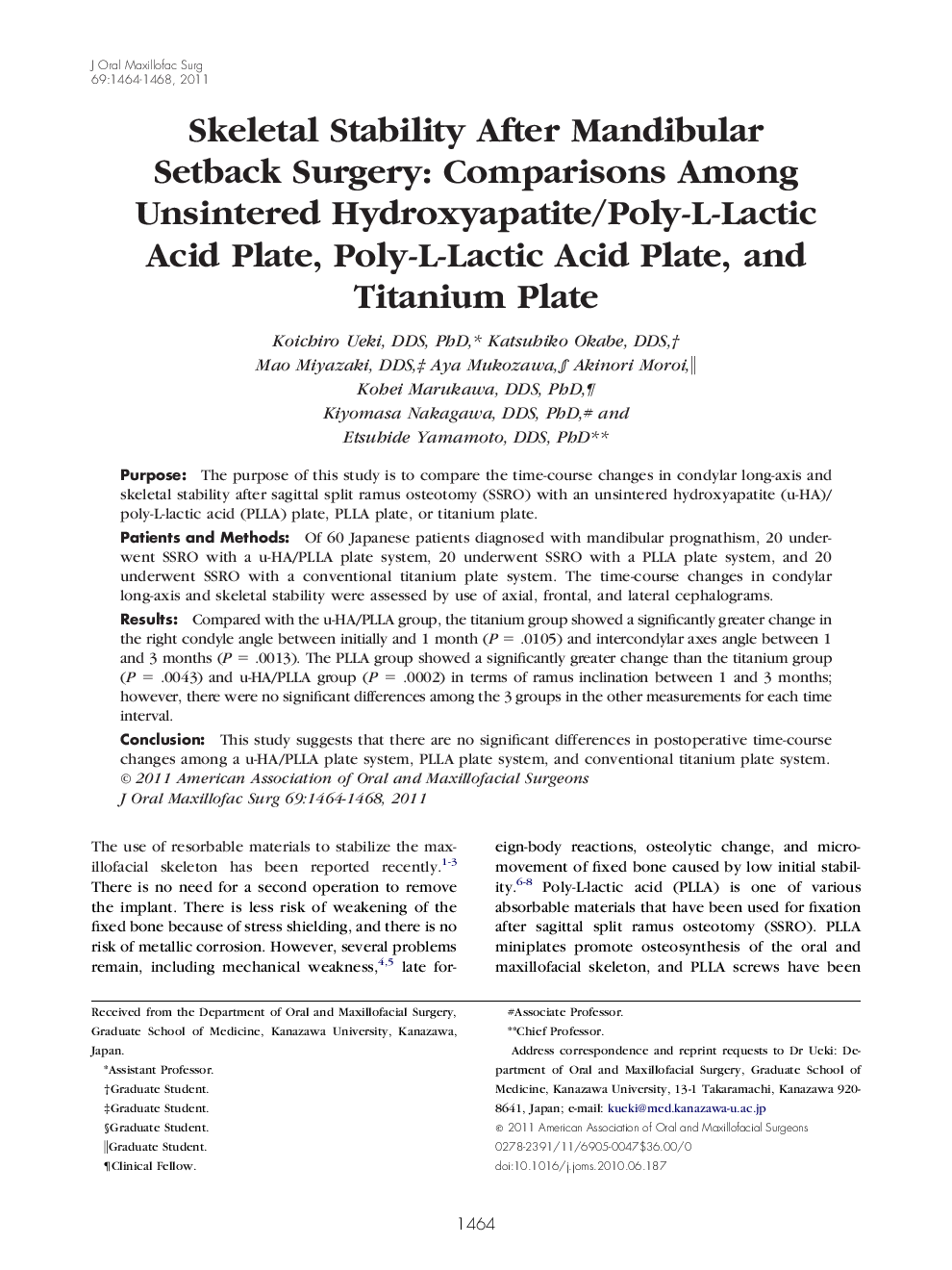| Article ID | Journal | Published Year | Pages | File Type |
|---|---|---|---|---|
| 3154667 | Journal of Oral and Maxillofacial Surgery | 2011 | 5 Pages |
PurposeThe purpose of this study is to compare the time-course changes in condylar long-axis and skeletal stability after sagittal split ramus osteotomy (SSRO) with an unsintered hydroxyapatite (u-HA)/poly-L-lactic acid (PLLA) plate, PLLA plate, or titanium plate.Patients and MethodsOf 60 Japanese patients diagnosed with mandibular prognathism, 20 underwent SSRO with a u-HA/PLLA plate system, 20 underwent SSRO with a PLLA plate system, and 20 underwent SSRO with a conventional titanium plate system. The time-course changes in condylar long-axis and skeletal stability were assessed by use of axial, frontal, and lateral cephalograms.ResultsCompared with the u-HA/PLLA group, the titanium group showed a significantly greater change in the right condyle angle between initially and 1 month (P = .0105) and intercondylar axes angle between 1 and 3 months (P = .0013). The PLLA group showed a significantly greater change than the titanium group (P = .0043) and u-HA/PLLA group (P = .0002) in terms of ramus inclination between 1 and 3 months; however, there were no significant differences among the 3 groups in the other measurements for each time interval.ConclusionThis study suggests that there are no significant differences in postoperative time-course changes among a u-HA/PLLA plate system, PLLA plate system, and conventional titanium plate system.
